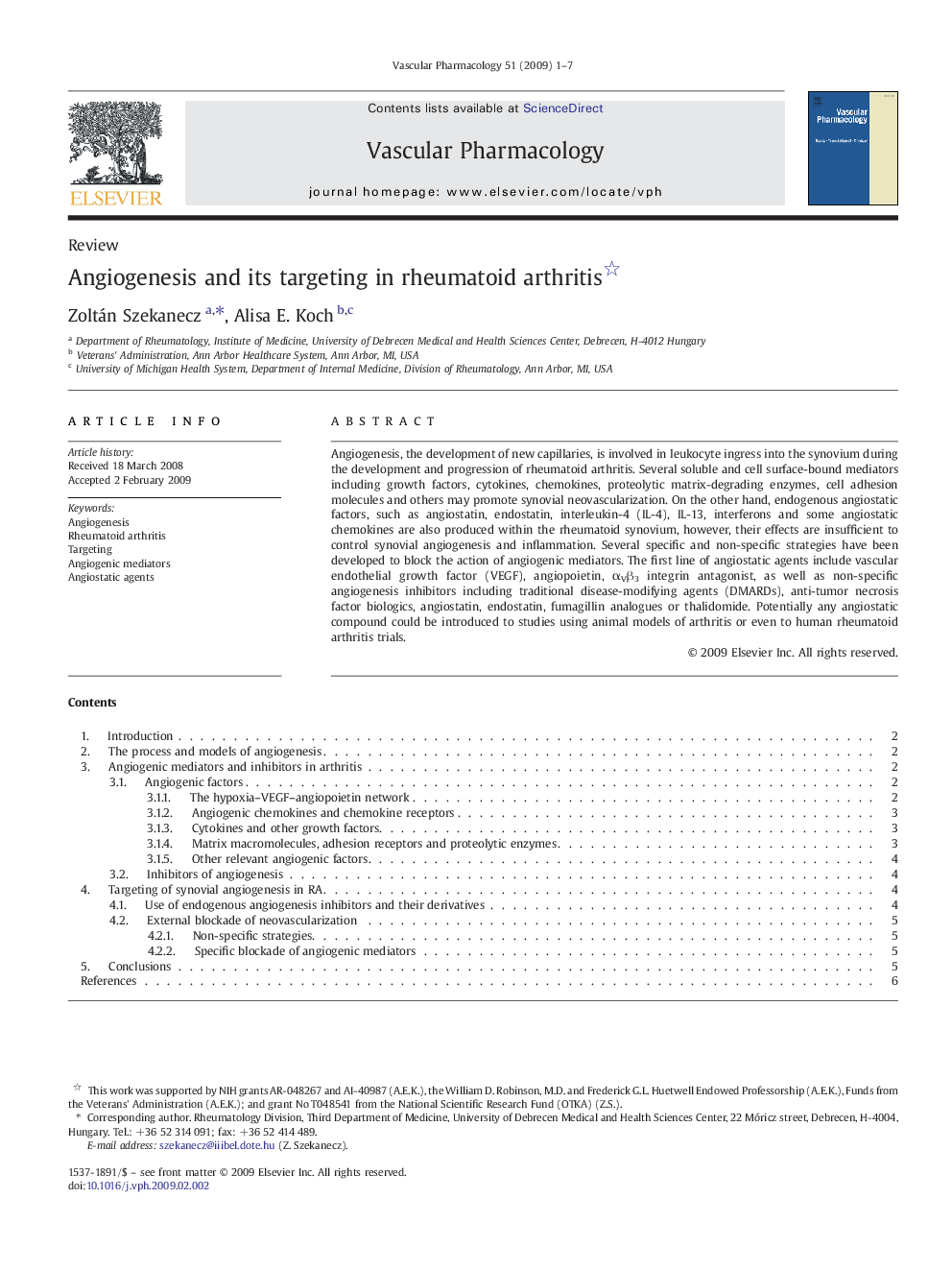| کد مقاله | کد نشریه | سال انتشار | مقاله انگلیسی | نسخه تمام متن |
|---|---|---|---|---|
| 2574695 | 1129708 | 2009 | 7 صفحه PDF | دانلود رایگان |

Angiogenesis, the development of new capillaries, is involved in leukocyte ingress into the synovium during the development and progression of rheumatoid arthritis. Several soluble and cell surface-bound mediators including growth factors, cytokines, chemokines, proteolytic matrix-degrading enzymes, cell adhesion molecules and others may promote synovial neovascularization. On the other hand, endogenous angiostatic factors, such as angiostatin, endostatin, interleukin-4 (IL-4), IL-13, interferons and some angiostatic chemokines are also produced within the rheumatoid synovium, however, their effects are insufficient to control synovial angiogenesis and inflammation. Several specific and non-specific strategies have been developed to block the action of angiogenic mediators. The first line of angiostatic agents include vascular endothelial growth factor (VEGF), angiopoietin, αVβ3 integrin antagonist, as well as non-specific angiogenesis inhibitors including traditional disease-modifying agents (DMARDs), anti-tumor necrosis factor biologics, angiostatin, endostatin, fumagillin analogues or thalidomide. Potentially any angiostatic compound could be introduced to studies using animal models of arthritis or even to human rheumatoid arthritis trials.
Journal: Vascular Pharmacology - Volume 51, Issue 1, July 2009, Pages 1–7